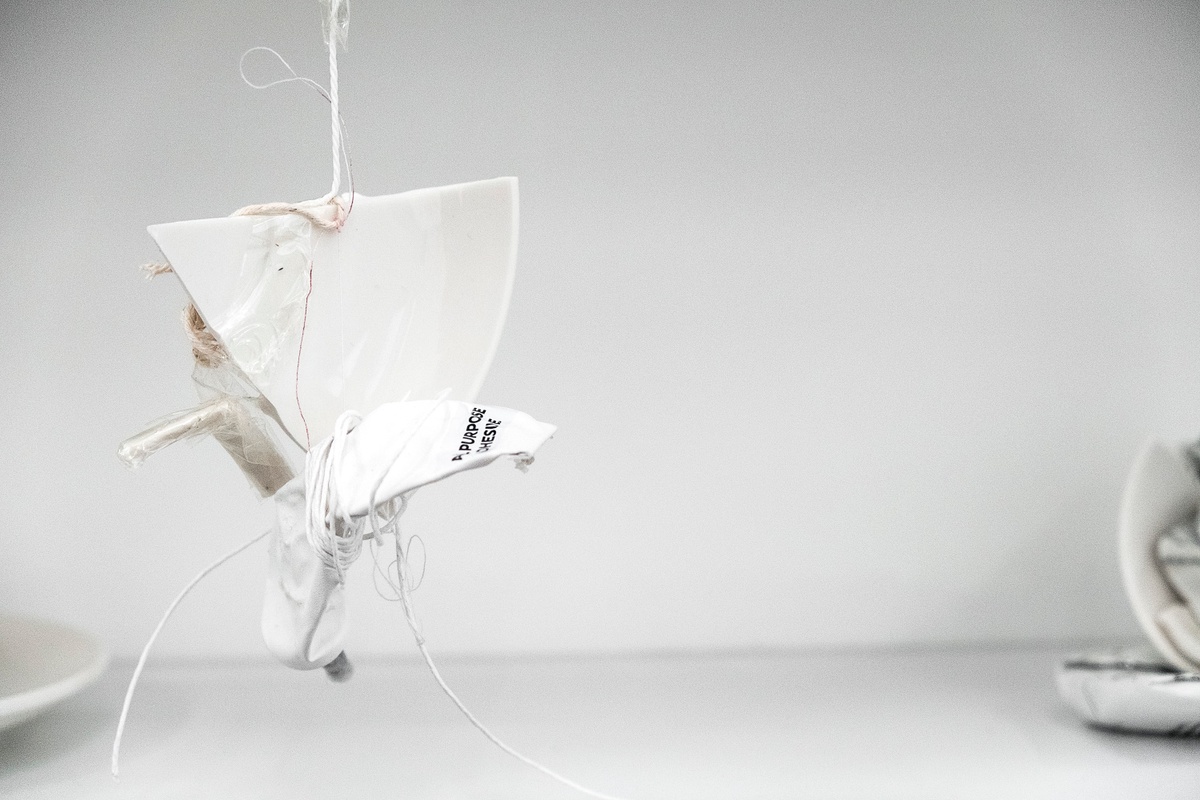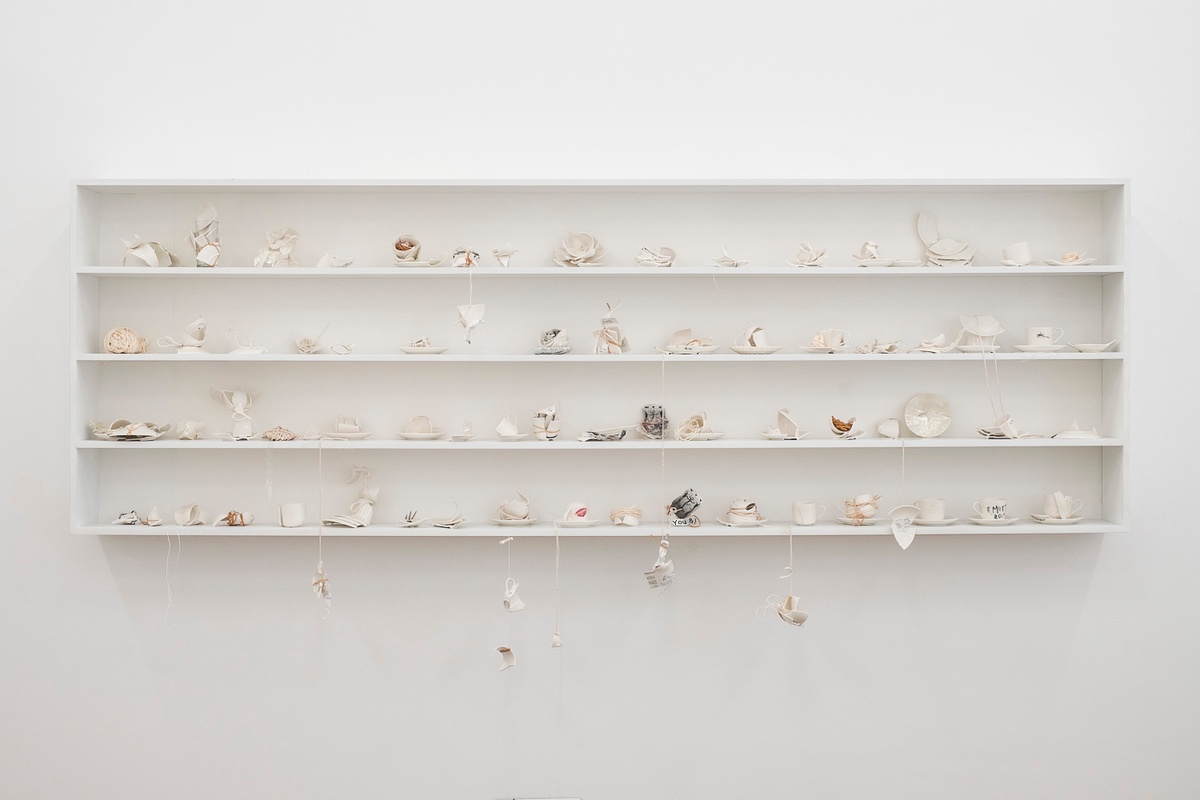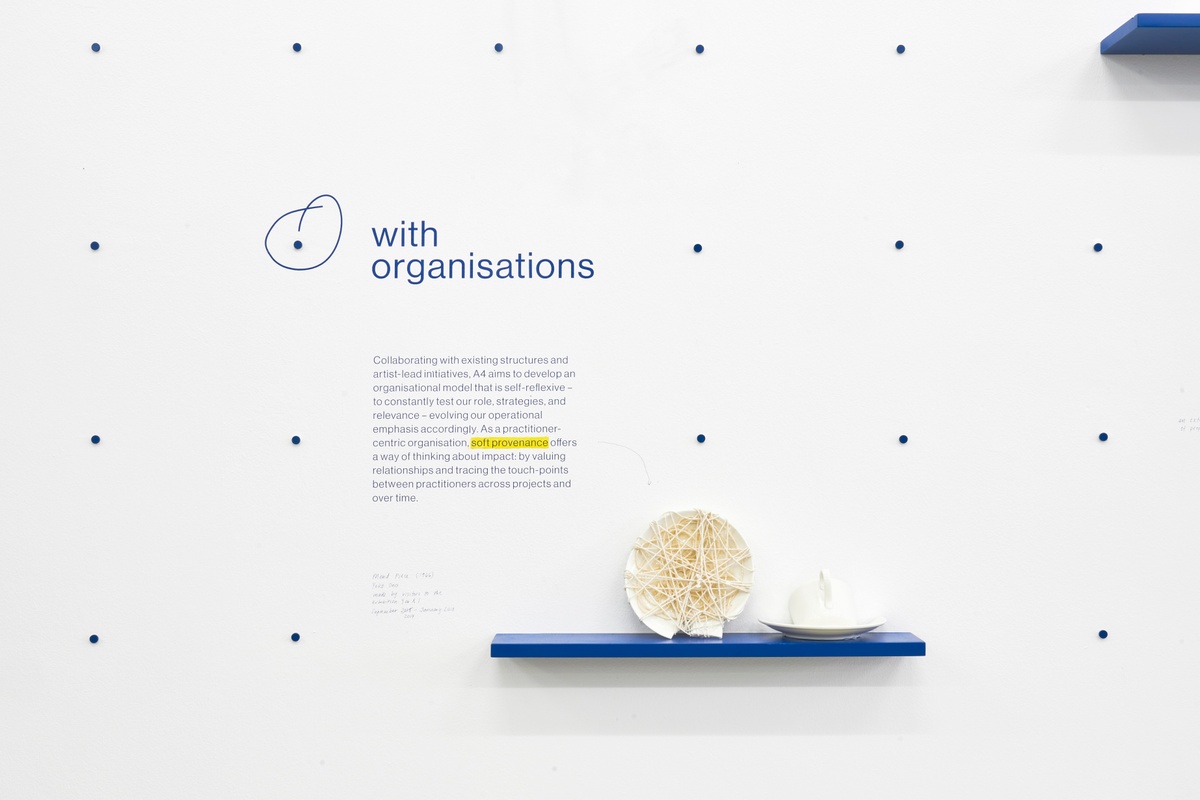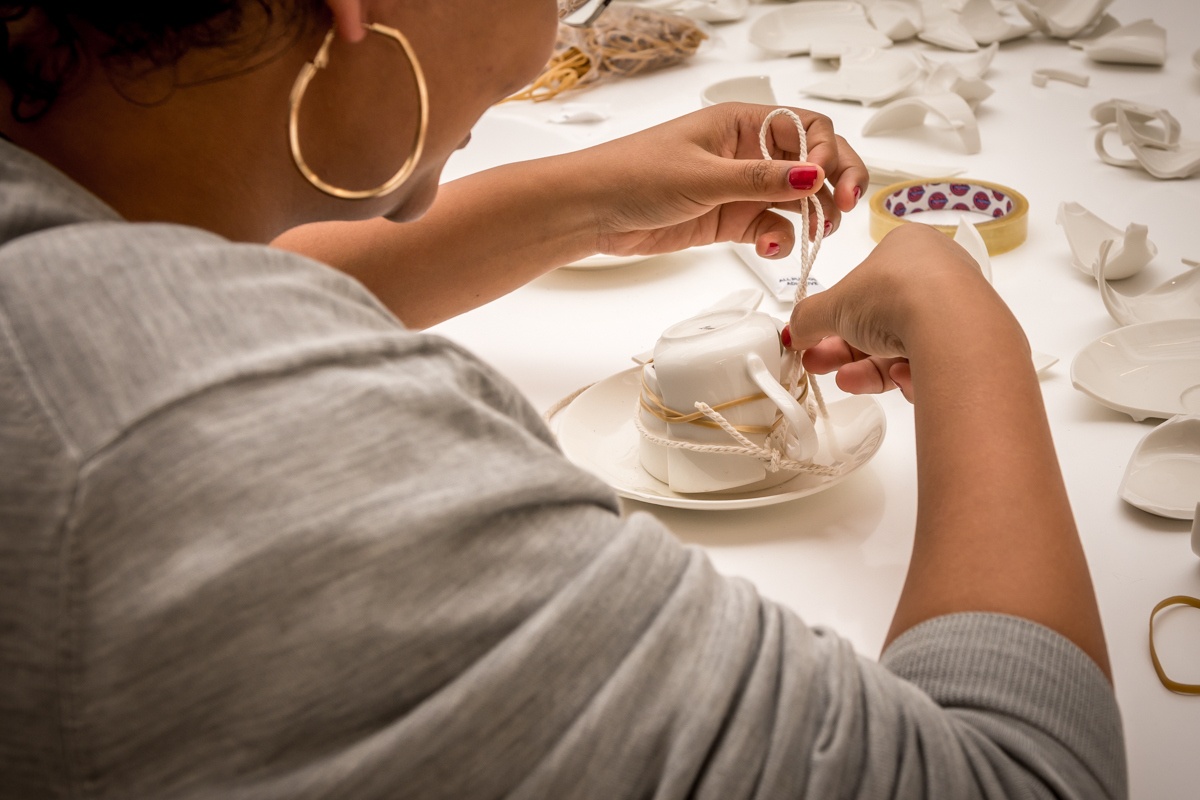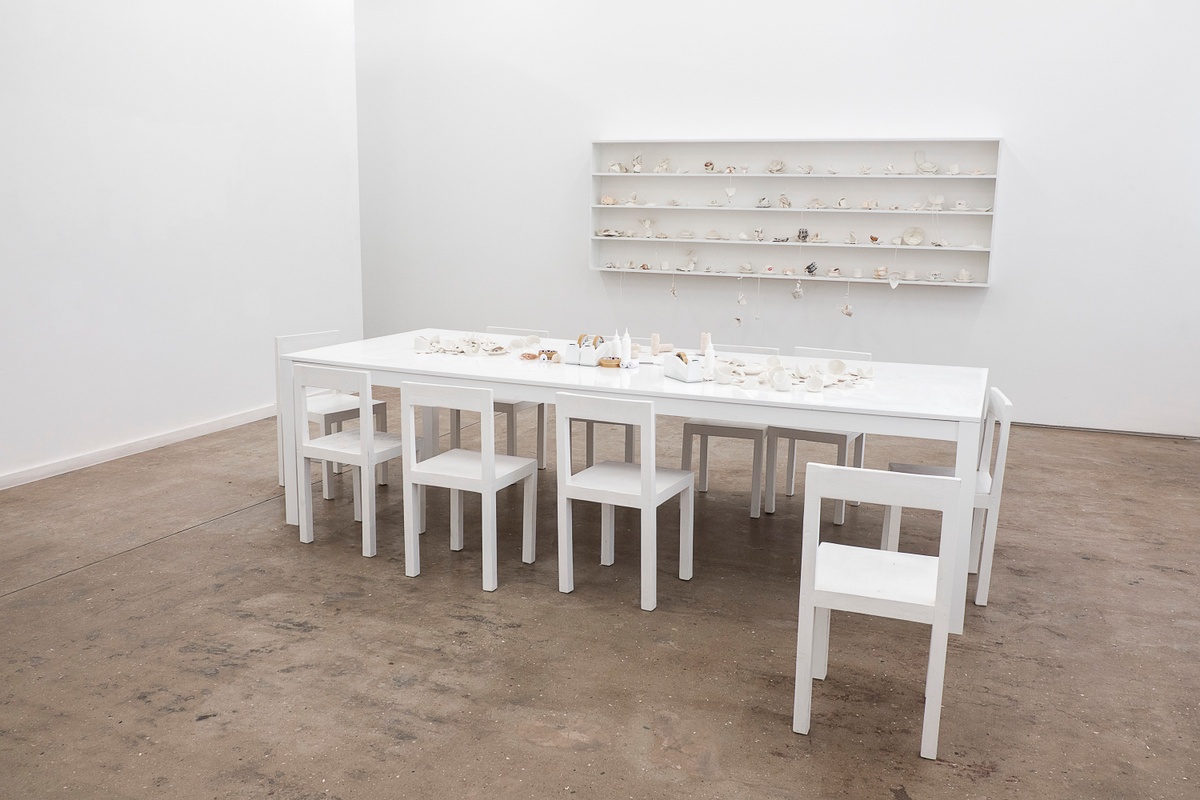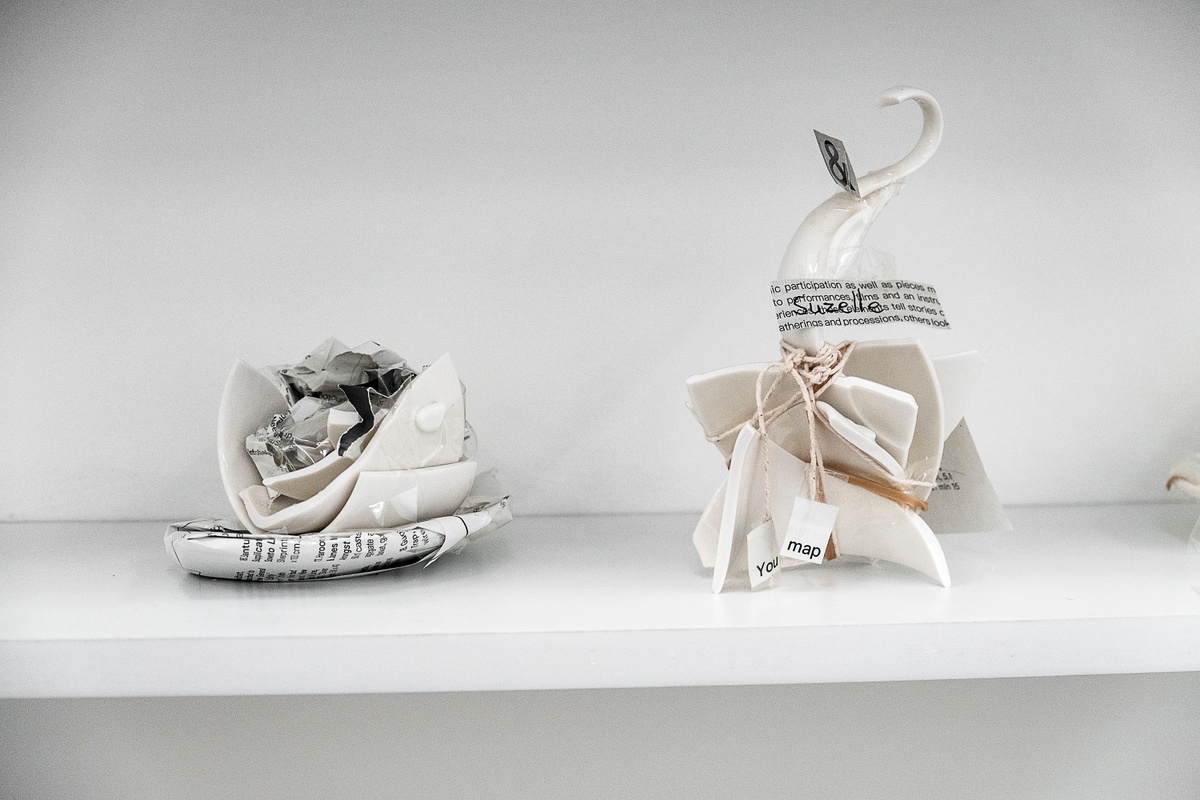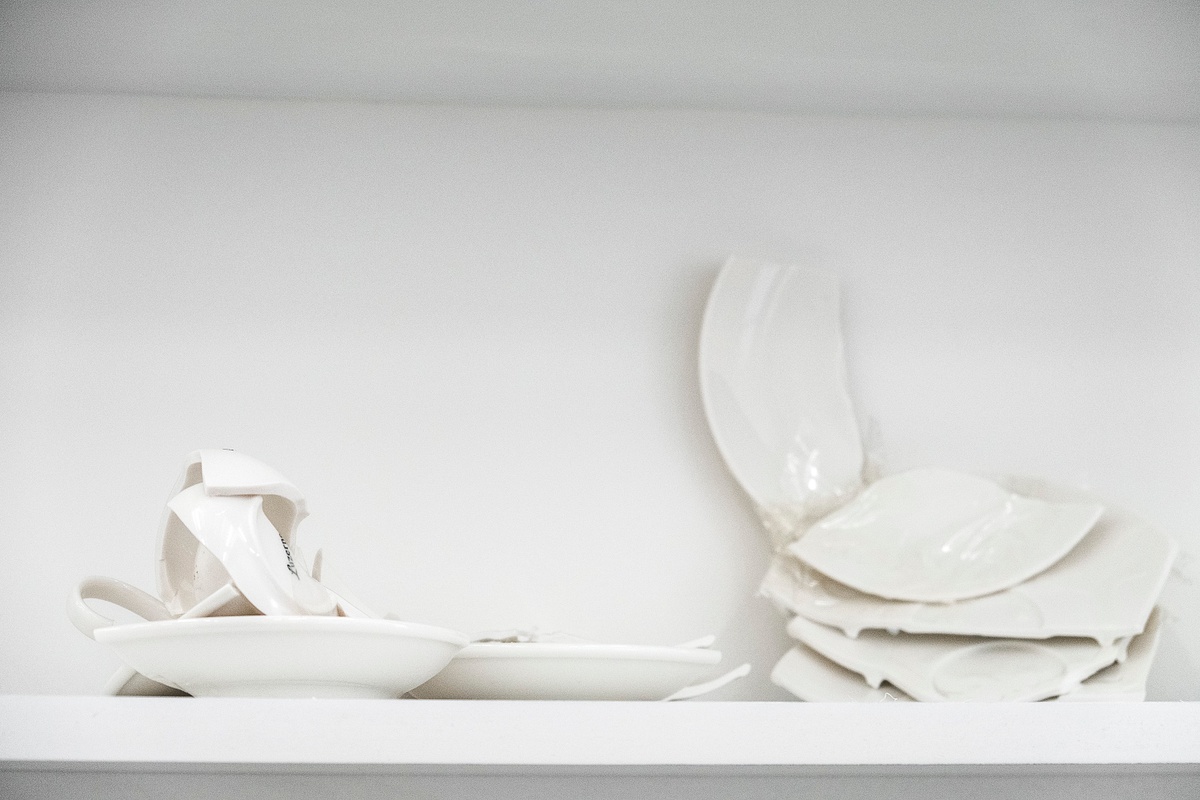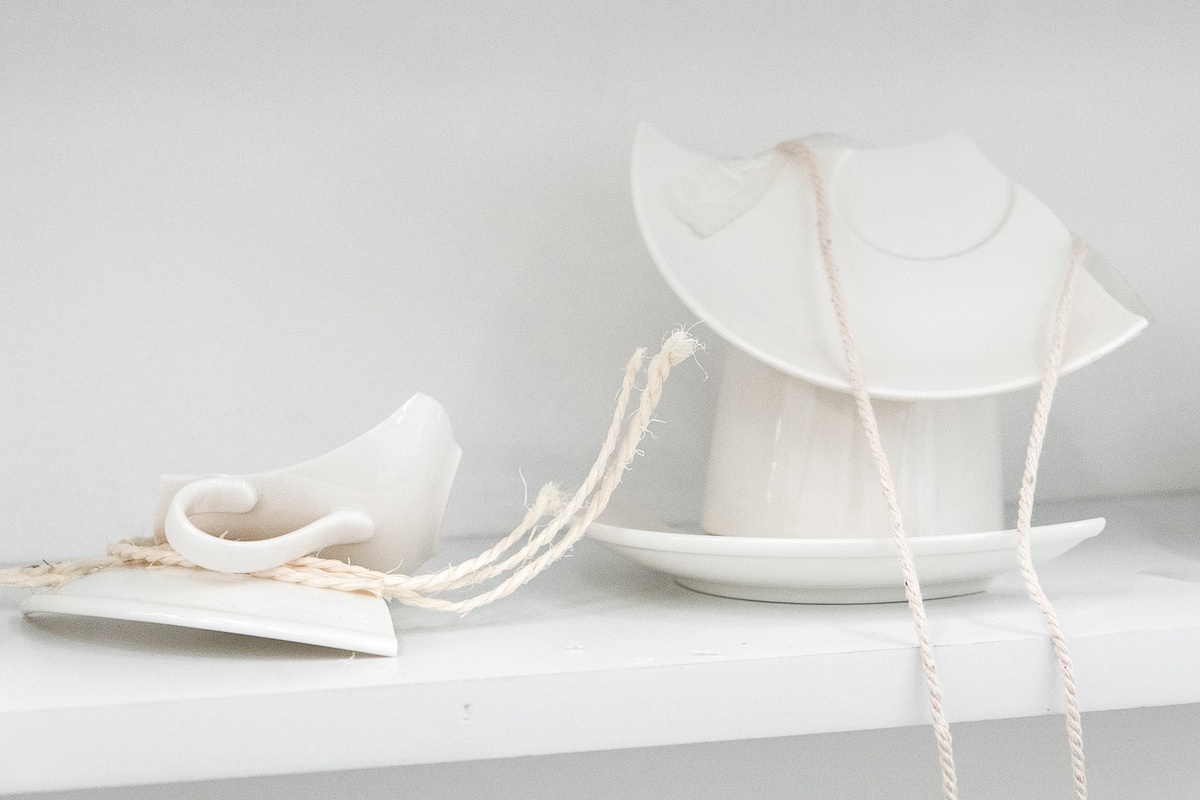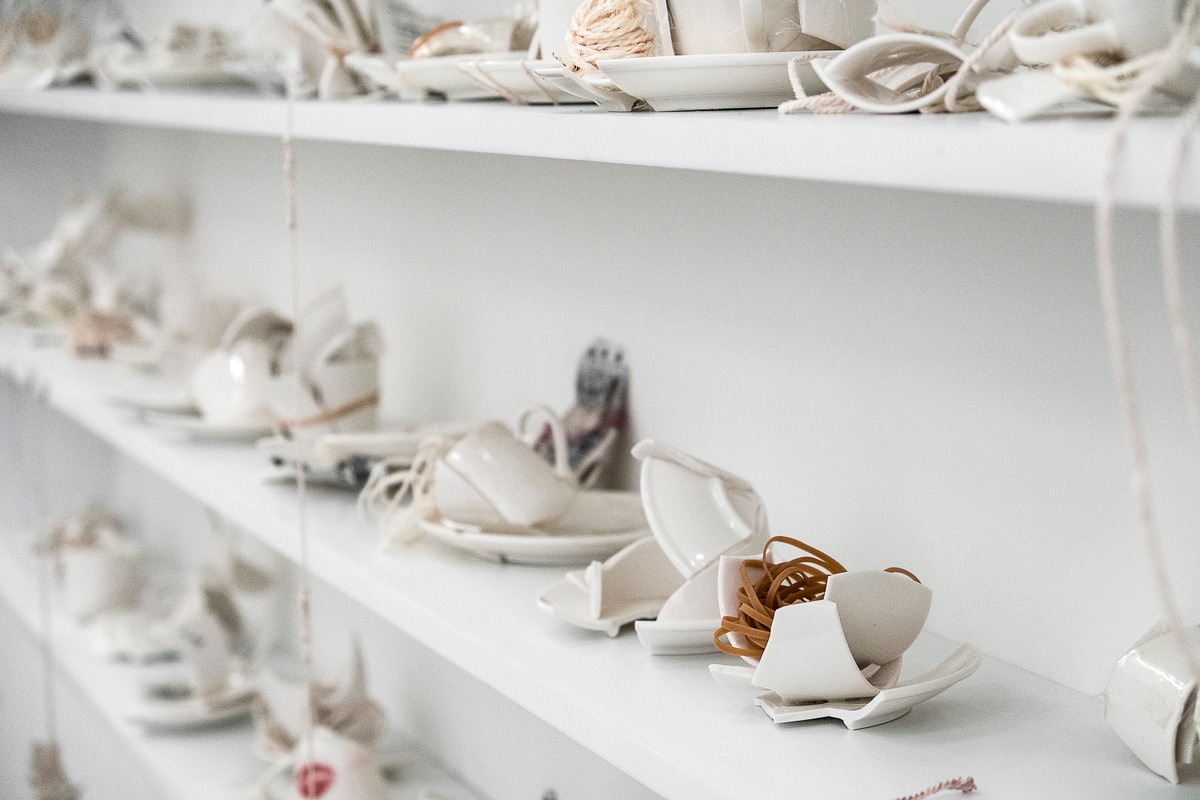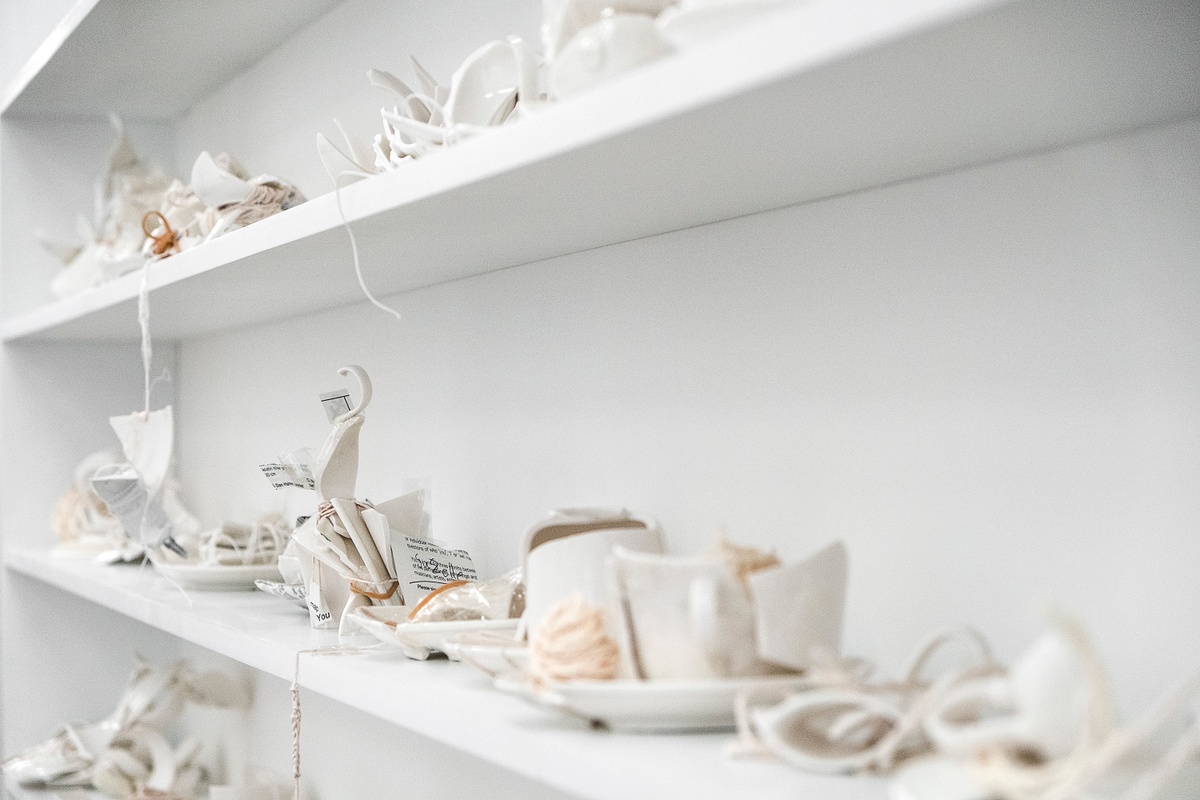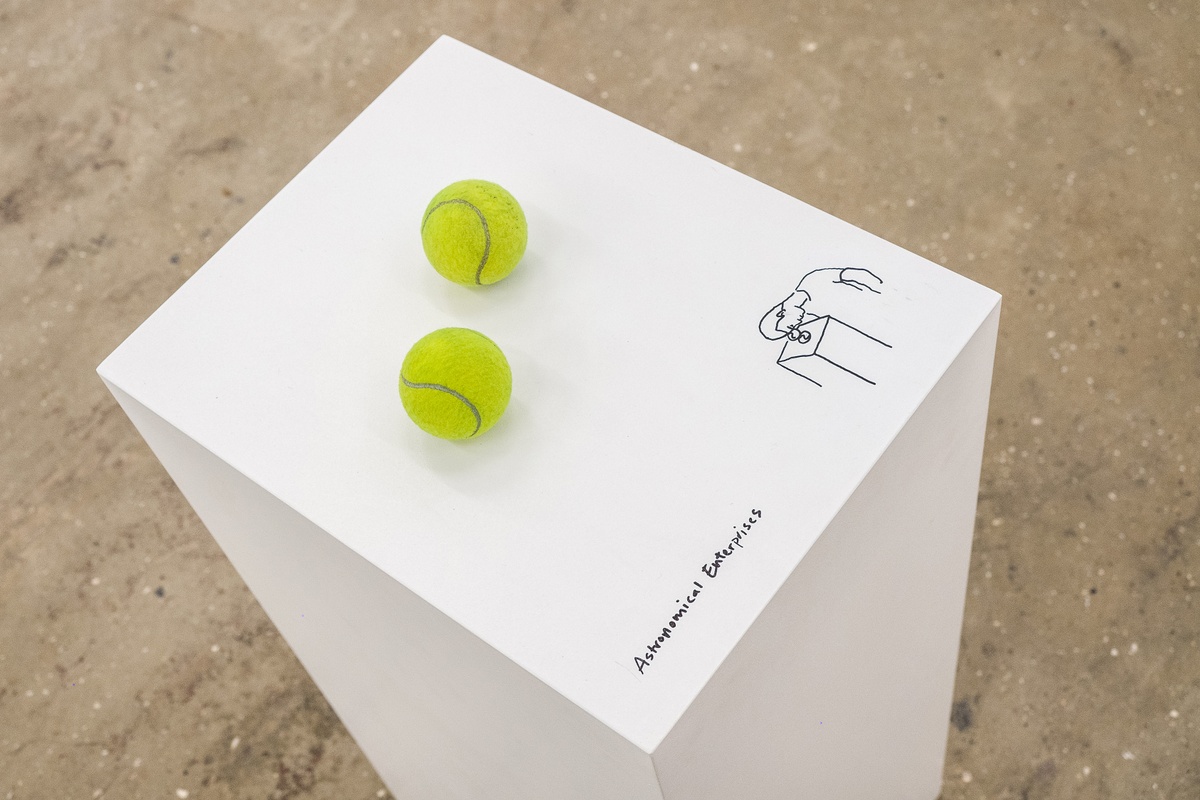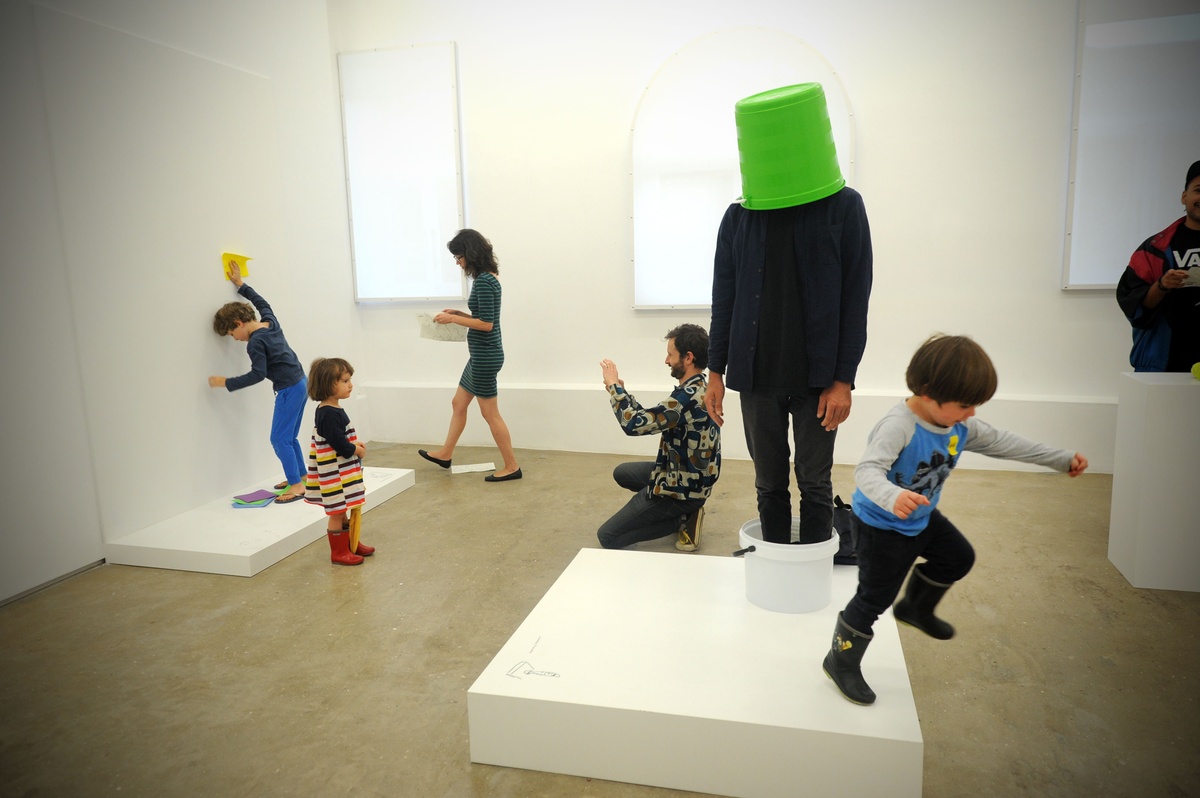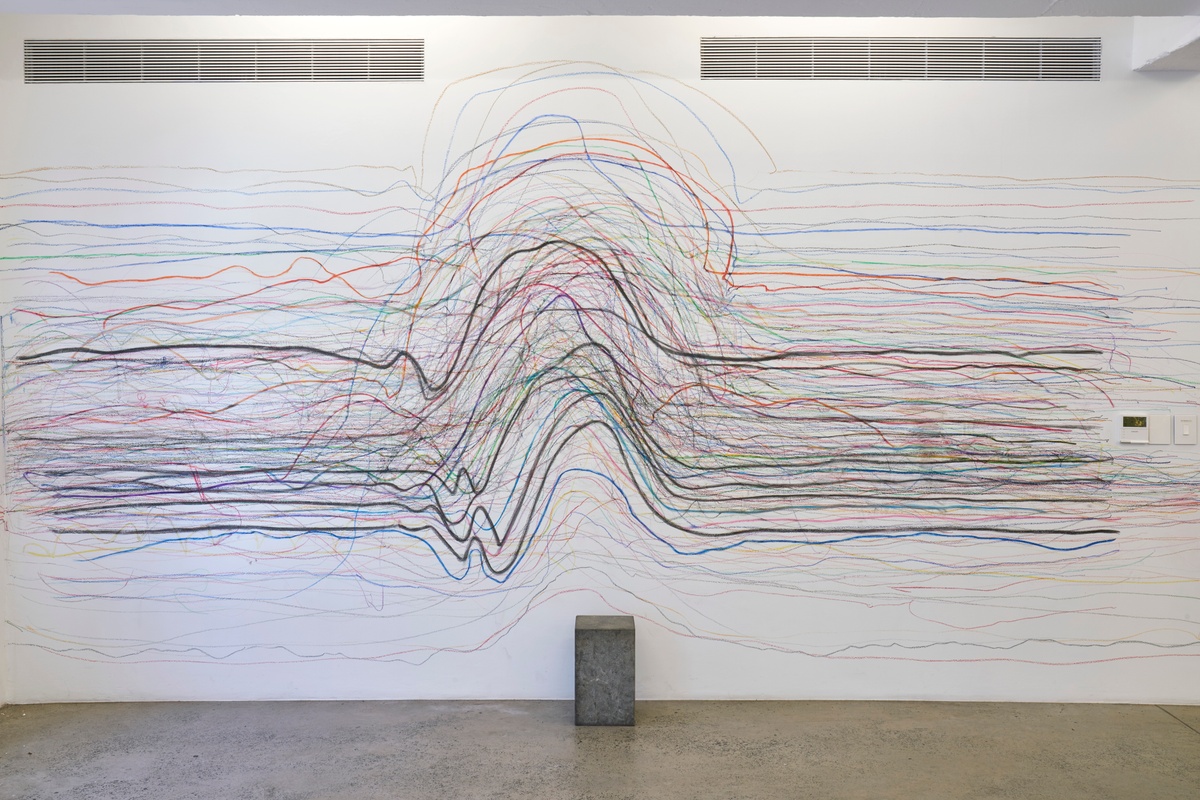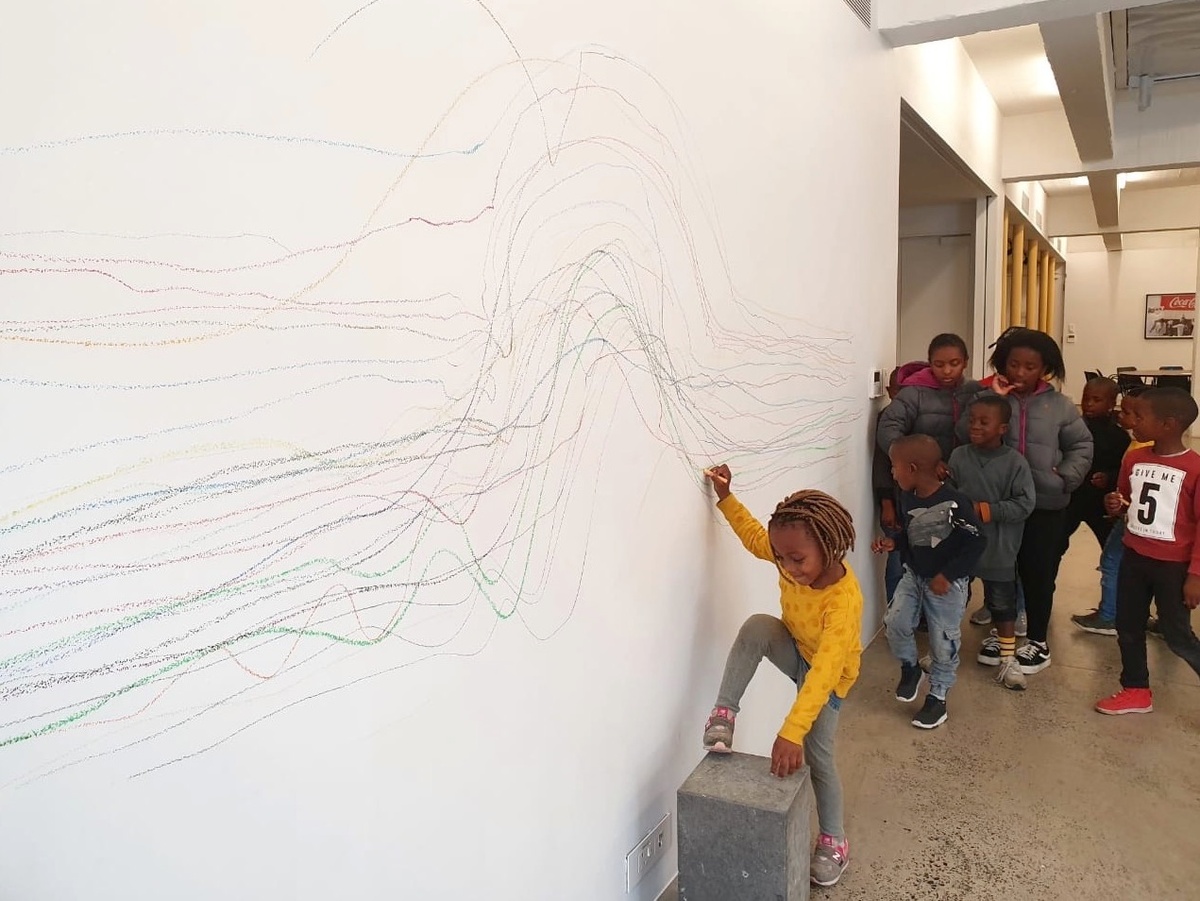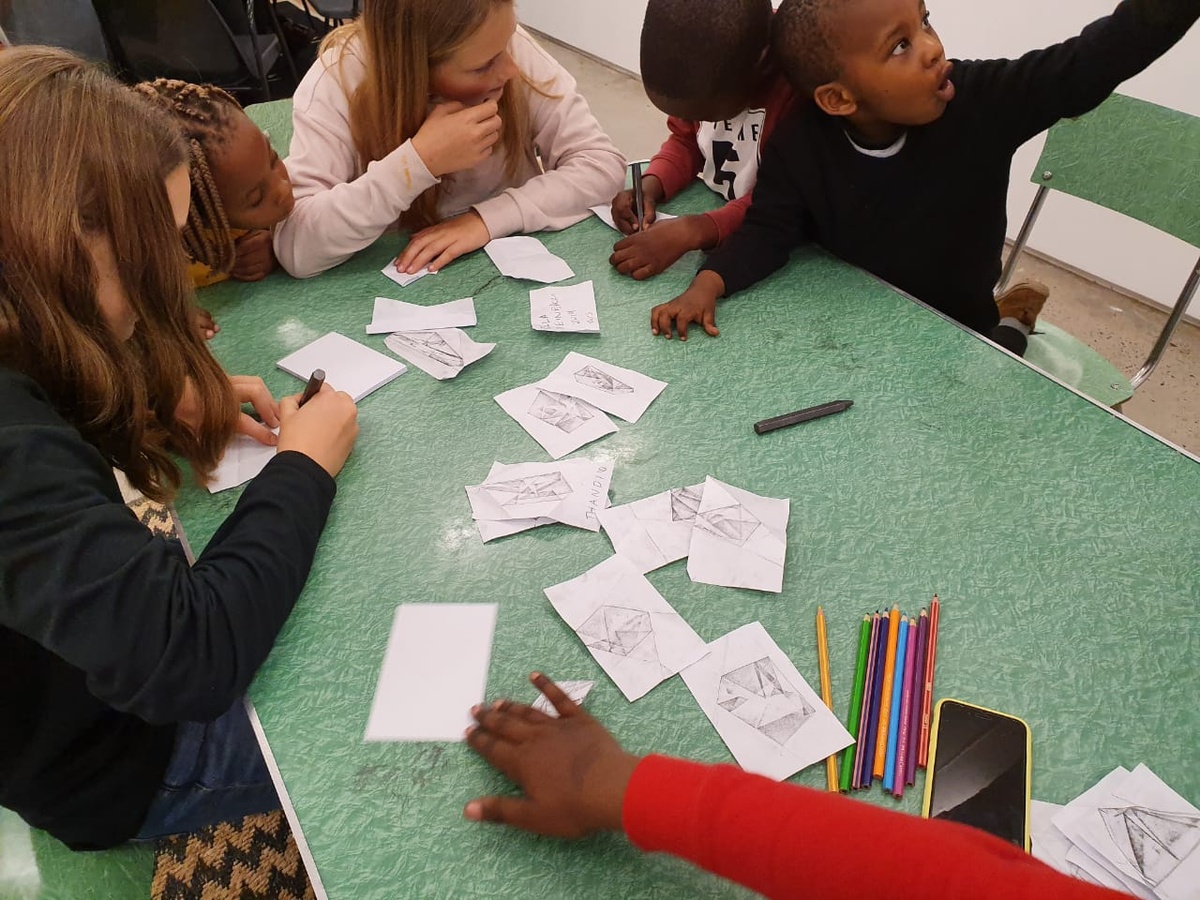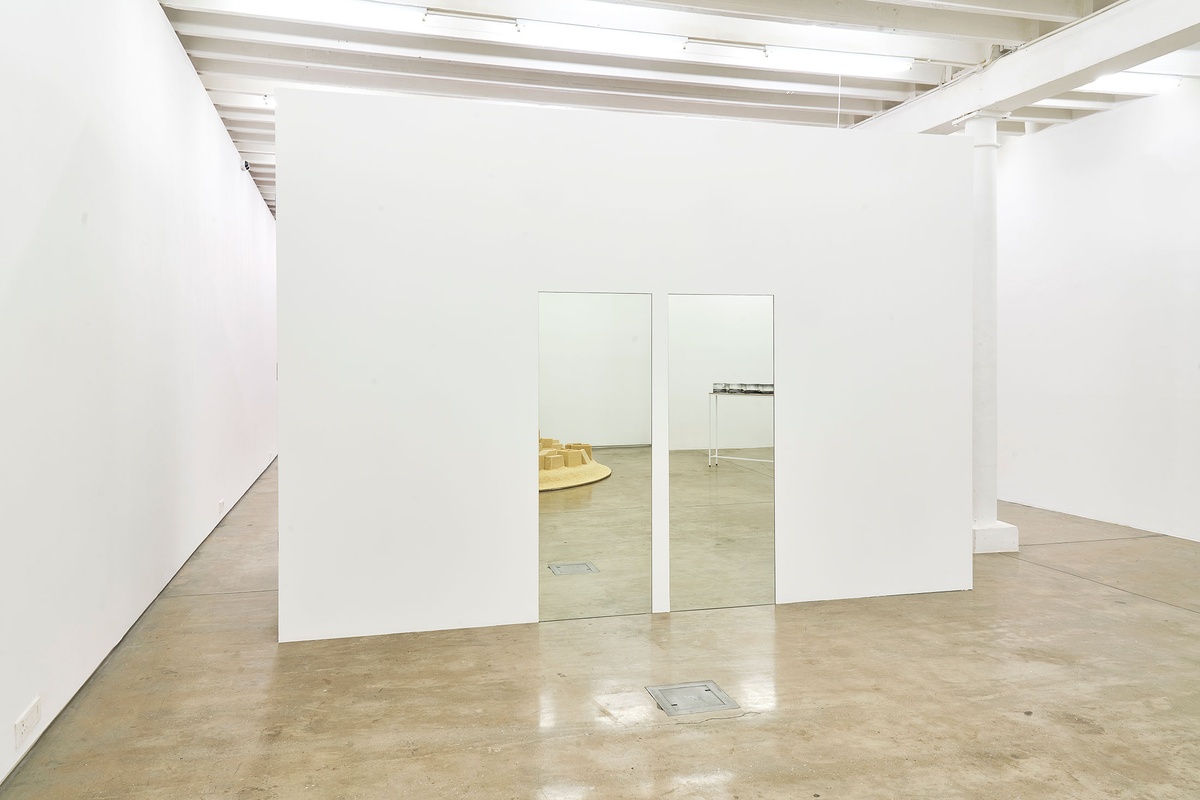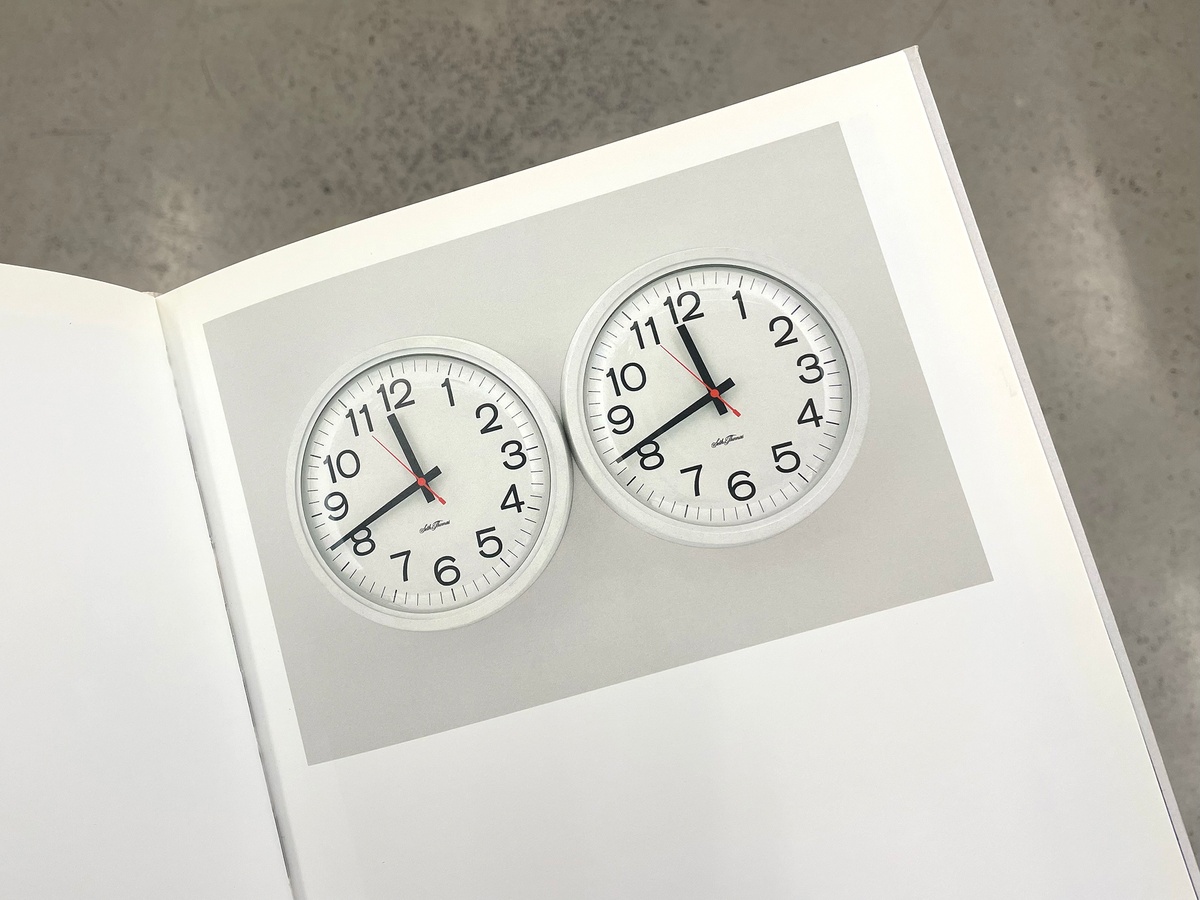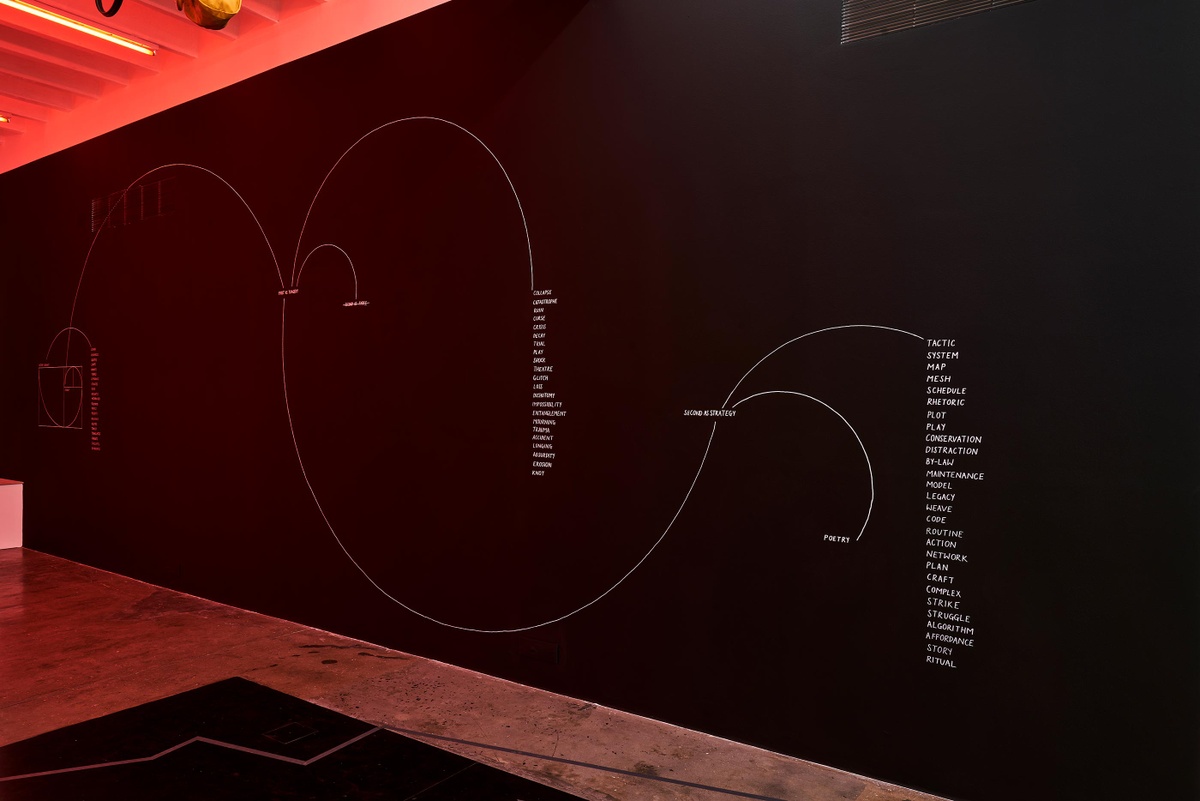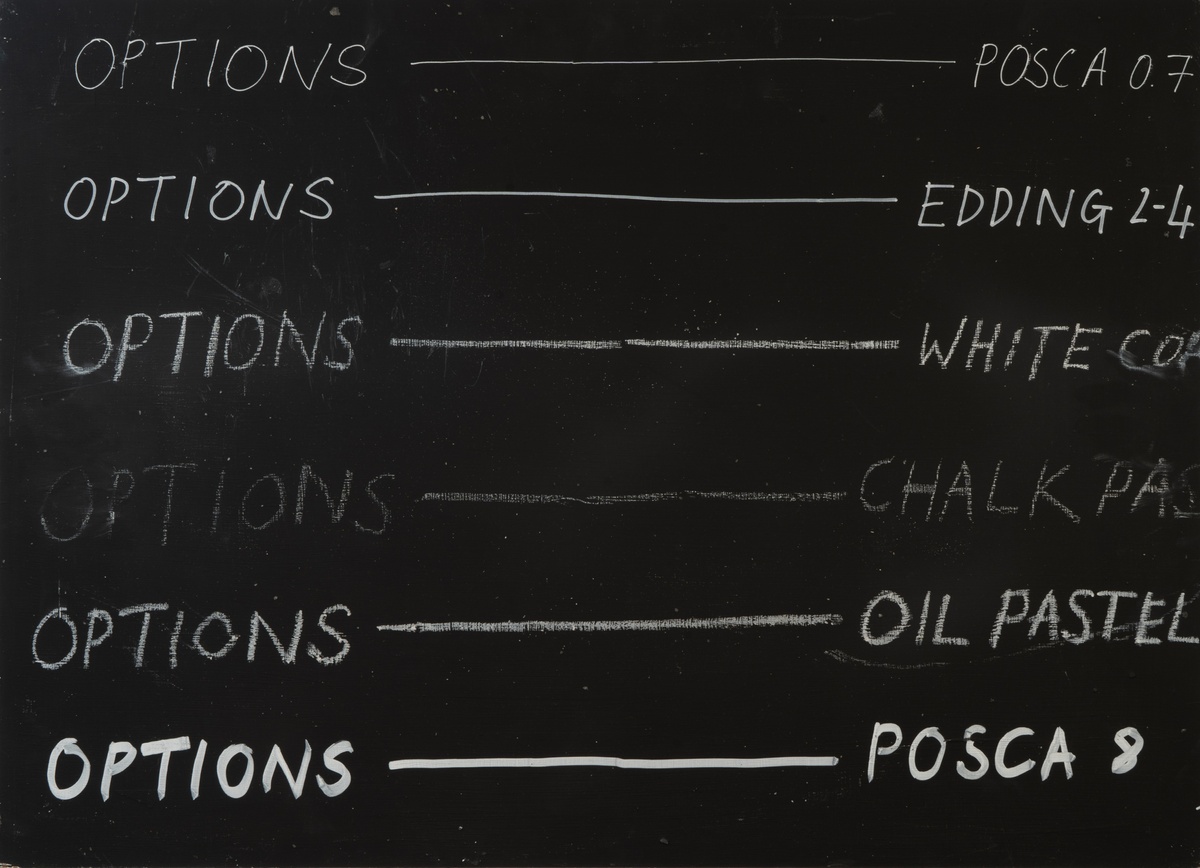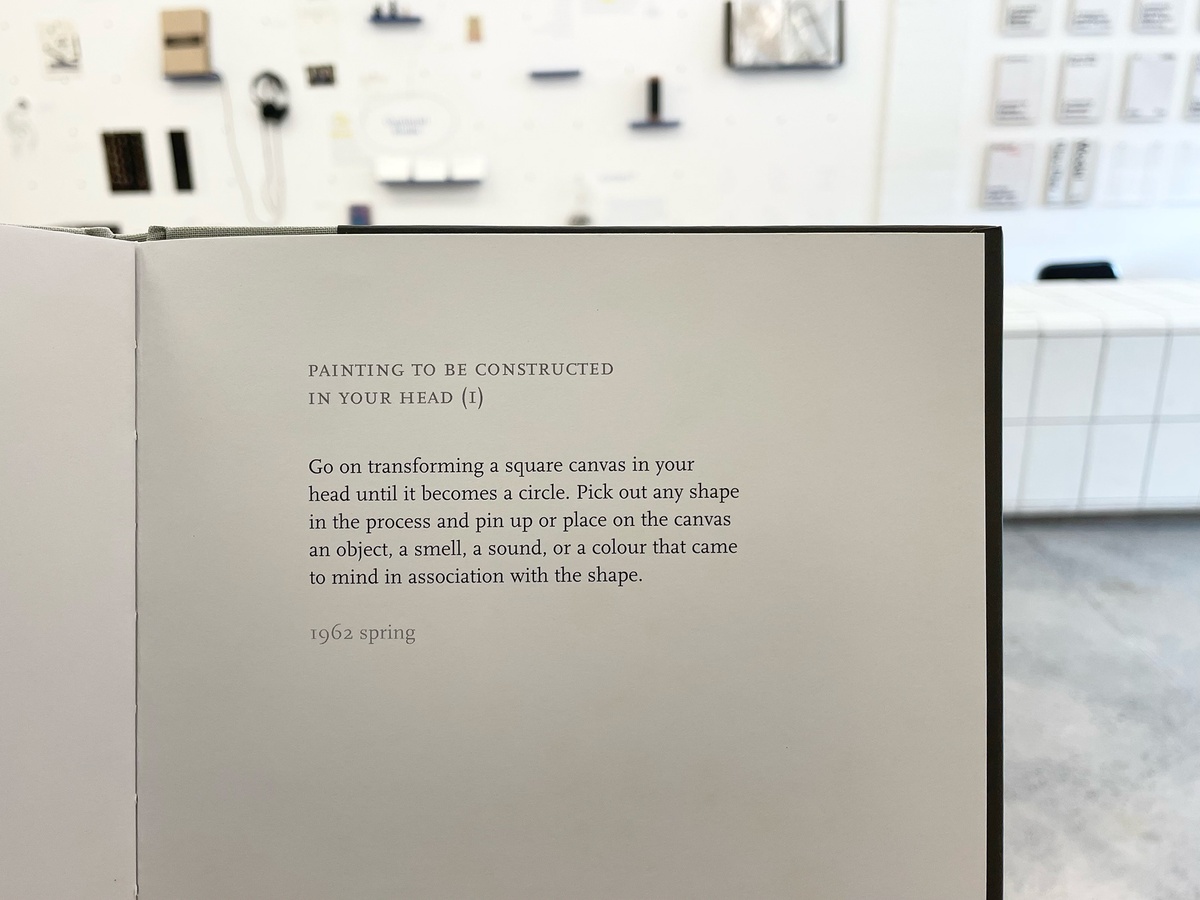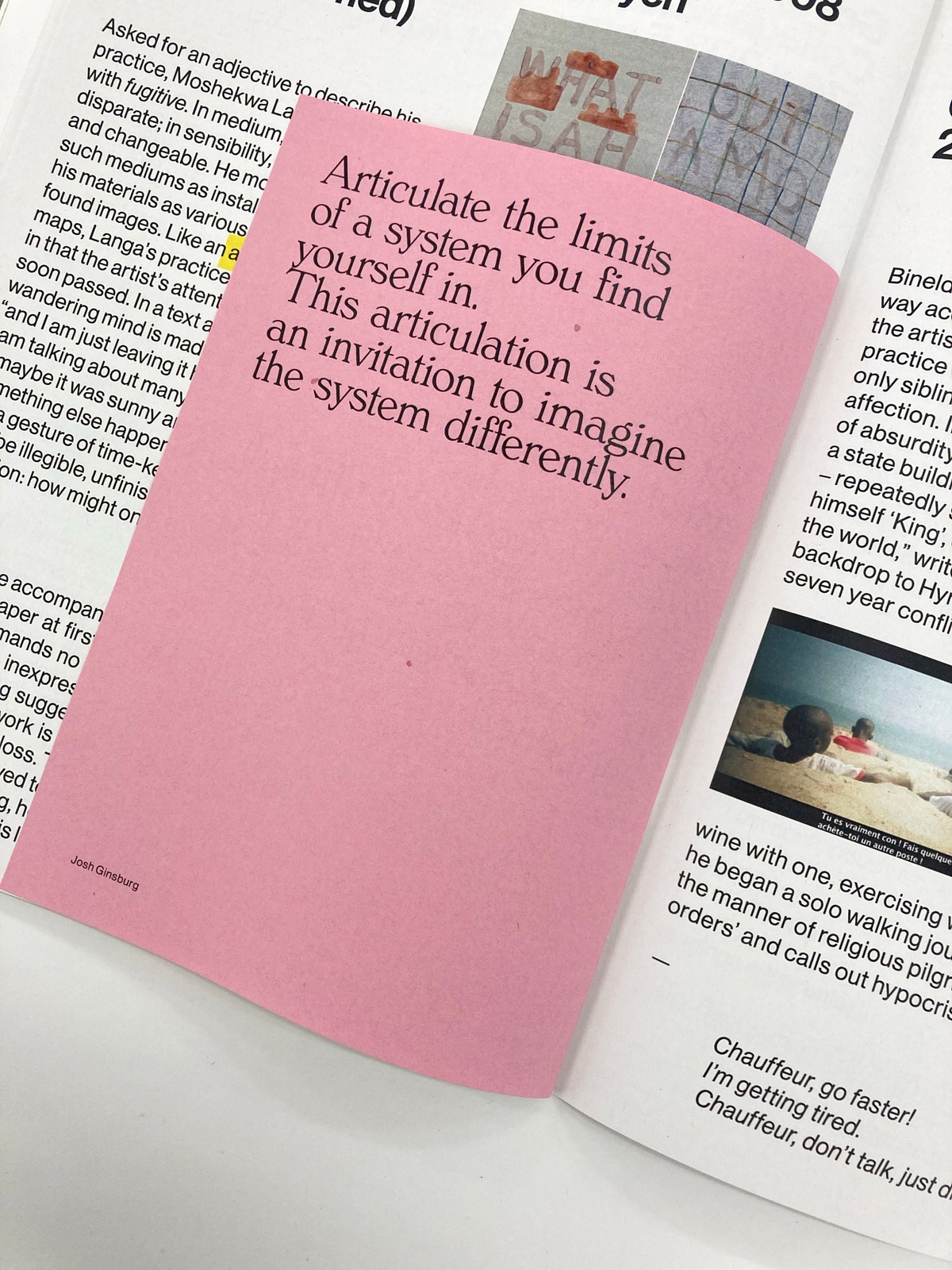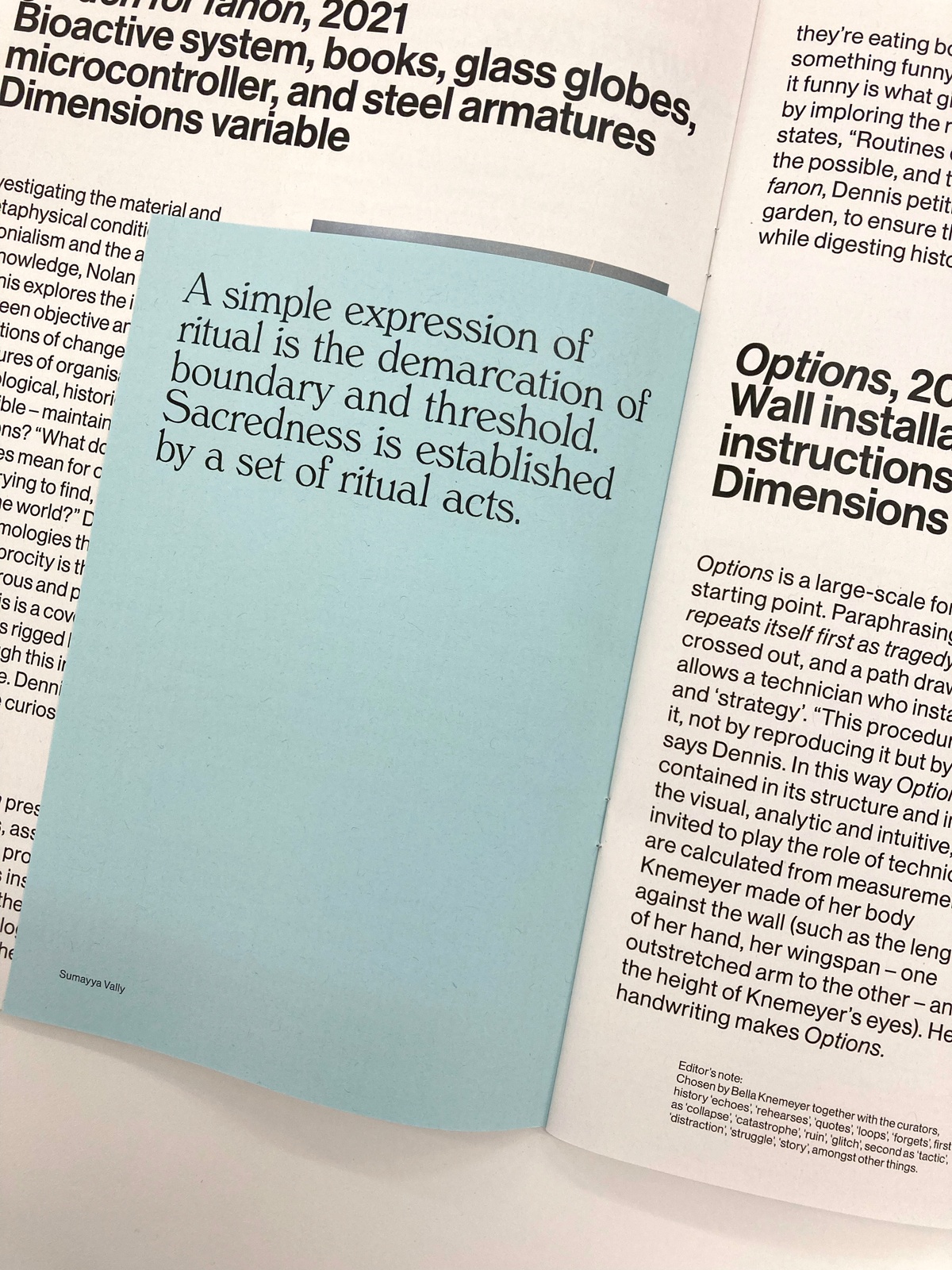Yoko Ono
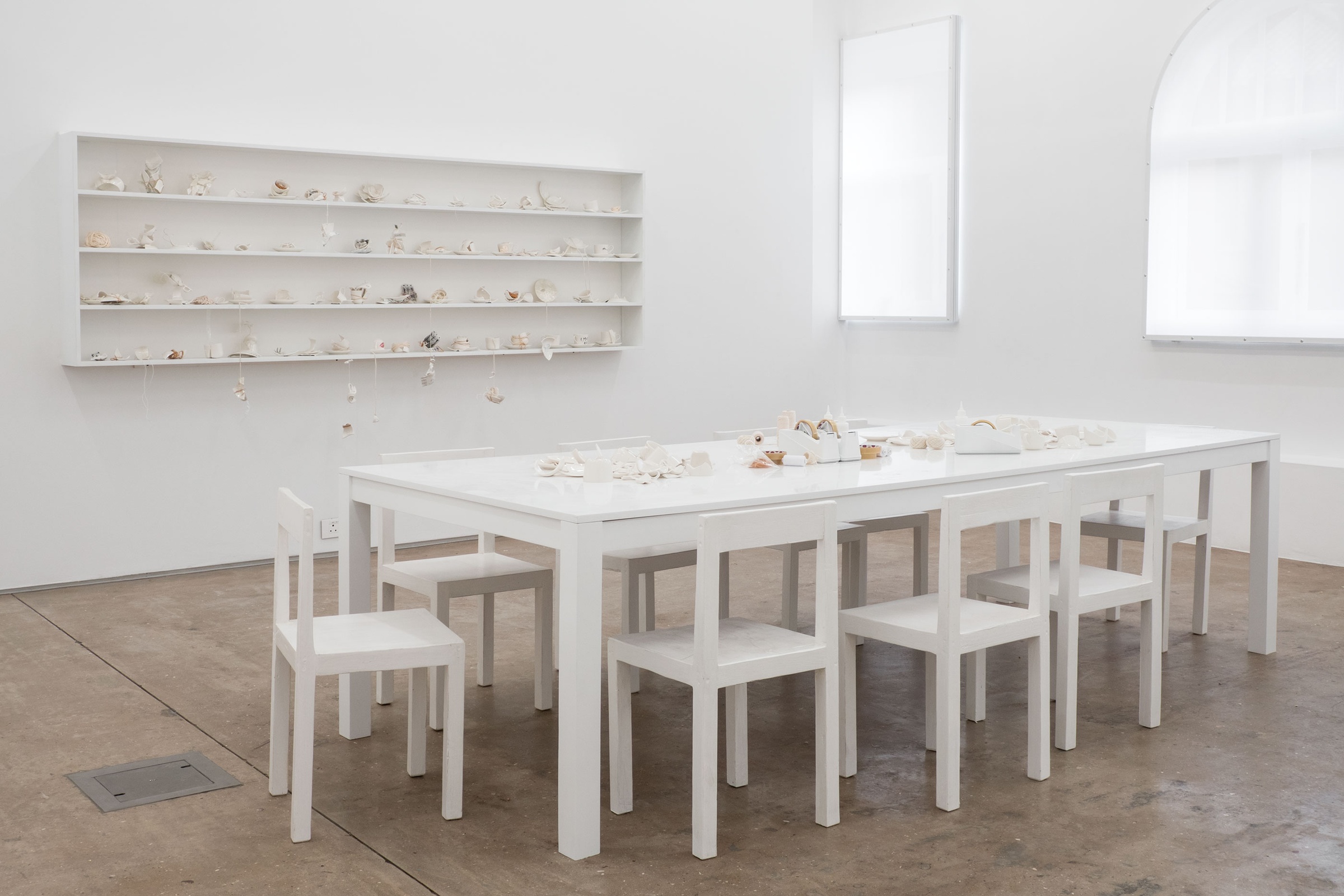
Yoko Ono’s MEND PIECE travels in the form of a poem:
Mend with wisdom
mend with love.
It will mend the earth
at the same time.
Accompanying the poem, a list of materials and supplies – in summary, ten wooden chairs that have been painted white, a white wooden table, broken cups and saucers, twine, glue, all-purpose adhesive, thread and scissors, and shelves. The work emerges as the exhibition in which it appears unfolds, where visitors are invited to ‘mend’ the crockery. Any attempt to fix a cup or saucer is thwarted by the volume of the porcelain pieces, the extent of their brokenness. Meditating on Ono’s prompt, visitors instead find themselves making anew. Small sculptures emerge from the materials at hand, where invention becomes its own form of repair.
Each iteration of MEND PIECE is a discrete work. Where the poem above opened MEND PIECE, Andrea Rosen Gallery, New York City version, included in You & I in A4's Gallery (September 13, 2017–January 28, 2018), a variation on the poem opened MEND PIECE, A4 Arts Foundation, Cape Town version (1966/2017), included in the exhibition Customs curated by Sumayya Vally at A4 (July 2–October 8, 2022). This second version has an additional line: "mend with your heart."
b.1933, Tokyo
Among the art objects Yoko Ono has made, many have necessitated their own disappearance, much like Smoke Painting (1961), a canvas accompanied by the invitation to press lit cigarettes into its fibres until the fabric has all but burnt away. Drawn to the ephemeral, the incomplete and understated, those among her works that find no material expression persist instead as text, performance, film, or as koan-like instructions: “Light a match and watch till it goes out,” “draw a line until you disappear,” “make one tunafish sandwich and eat.” Some read as poetry, others are matter-of-fact. With these ‘instruction pieces’, Ono invites the viewer to perform the gesture she proposes, stepping back so that another may come forward to take her place. Even when the artist is bodily present, as in the performance Cut Piece (1965), she remains impassive; allowing her clothes to be cut away, the piece to continue on to its conclusion. Her work is coloured by this quiet contradiction: the precision of her propositions and her commitment to letting go.
